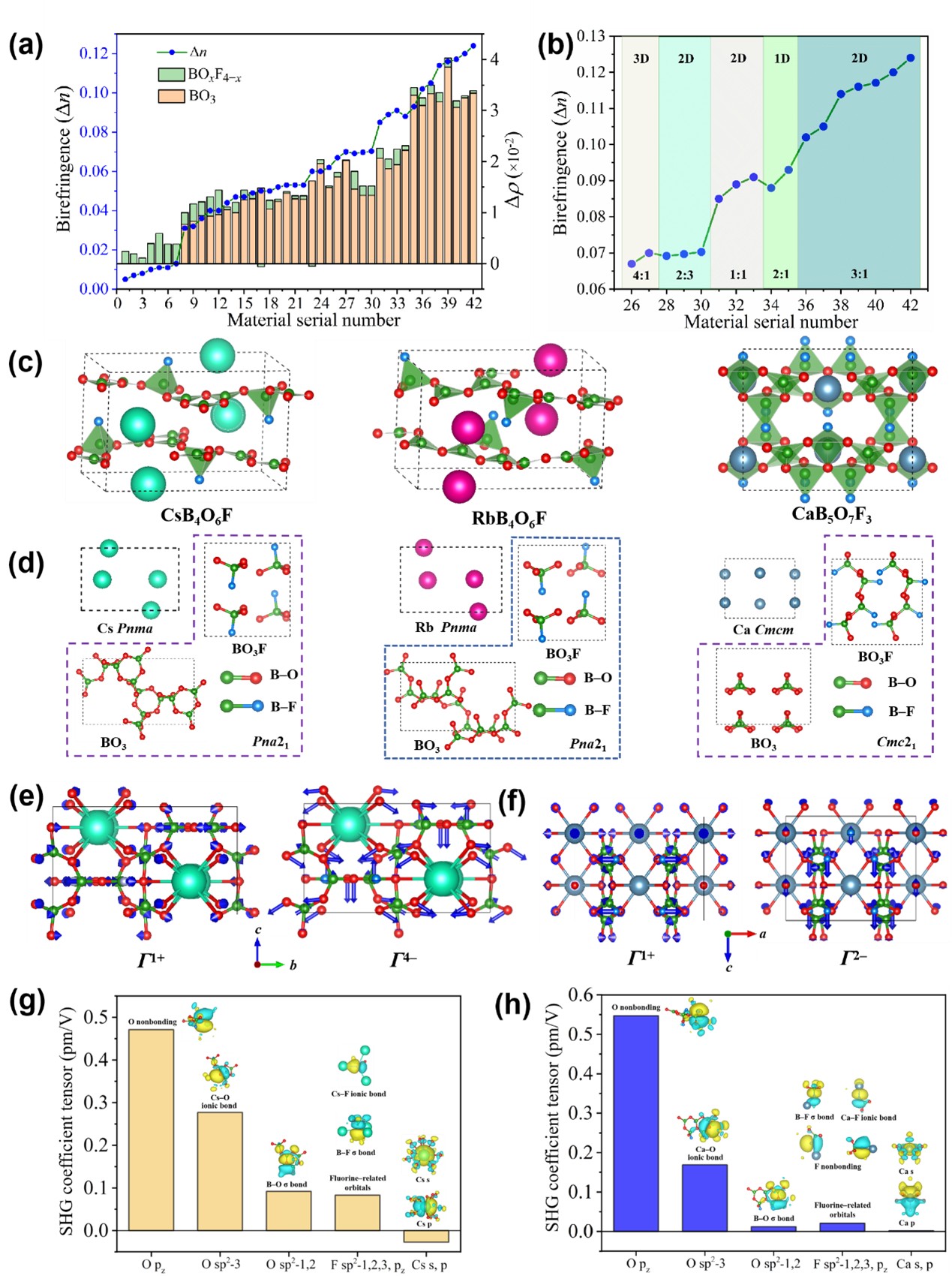Mechanism Revealed:the Non-centrosymmetric Sublattice Band-edge Orbital Distribution in Fluorooxoborates
Editor: | Dec 31,2024
Recently, researchers from the XTIPC of the Chinese Academy of Sciences made significant progress in studying the deep-ultraviolet nonlinear optical (NLO) properties of fluorooxoborates. They proposed a new strategy to optimize the boron-oxygen framework through covalently bonded fluorine, providing theoretical basis for the design of novel optical materials.
Fluorooxoborates have become an advantageous system for exploring deep-ultraviolet NLO materials due to their rich structural diversity and assembly modes. However, the inherent patterns of how fluorinated units with B-F bonds affect structure and properties remain unclear. The Crystal Materials Research Center at XTIPC systematically analyzed the birefringence and second harmonic generation (SHG) effect of a series of fluorooxoborates, discovering that the non-centrosymmetry and NLO properties mainly originate from the structural and performance characteristics of B-O/F sublattices (Figure 1). The introduction of fluorine modifies and optimizes the boron-oxygen framework through polymerization-induced and shear effects, which is beneficial for improving optical properties. Through orbital analysis of the SHG effect in fluorooxoborates, the team revealed the band-edge orbital distribution mechanism of non-centrosymmetric sublattices to SHG effect in fluorooxoborates, i.e., the orbitals that are formed in the non-centrosymmetric sublattice and appear at the edge of the energy bands will dominate the SHG. In addition, the polymerization-induced and shear effects of covalently bonded fluorine optimize the distribution of orbitals. In conclusion, the contribution of the SHG of the fluorooxoborates is mainly dominated by the oxygen nonbonding orbitals, with a significant direct contribution from fluorine, thus revealing the non-centrosymmetric sublattice band-edge orbital distribution mechanism. The physical mechanism of the SHG effect of fluorooxoborates is elucidated at the orbital level, demonstrating the contribution of covalently bonded fluorine. This research provides a new perspective for optimizing deep-ultraviolet NLO performance and lays the foundation for the design and development of future novel optical materials.
The related research findings were published as a communication in Science Bulletin (Sci. Bull., 2024, 69, 1192-1196), with XTIPC as the sole corresponding institution. Researchers Shilie Pan and Zhihua Yang from the Crystal Materials Research Center served as corresponding authors, and Fuming Li as the first author. This research was supported by the National Natural Science Foundation of China, the Chinese Academy of Sciences, and projects from the Xinjiang Uygur Autonomous Region.

Figure 1. Analysis of birefringence, electron distribution anisotropy, structure, and symmetry in typical fluorooxoborates, Wannier orbital band interpolation of CsB4O6F and CaB5O7F3, related-Wannier orbitals, and SHG contributions.
附件下载:
 (86) 991-3838931
(86) 991-3838931 lhskj@ms.xjb.ac.cn
lhskj@ms.xjb.ac.cn (86)991-3838957
(86)991-3838957 40-1 Beijing Road
Urumqi, XinjiangChina
40-1 Beijing Road
Urumqi, XinjiangChina